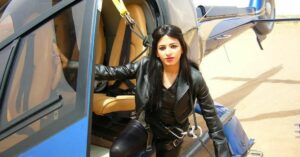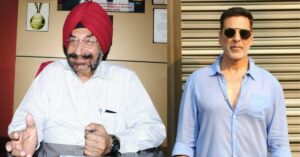Belgaum to Bollywood: The Man Behind Kamat Studios & Hindi Cinema’s Most Iconic Pics
Damodar Kamat opened Kamat Foto Studio in 1945 in Mumbai, and went on to capture publicity stills and behind the scenes photos of several members of the film fraternity, including Raj Kapoor, Guru Dutt, Bimal Roy, Nargis, Meena Kumari, Madhuri Dixit, and more.

Even after seeing the image of late actor Dev Anand playing a shiny drum set, it is hard for me to imagine him in Teesri Manzil (1966). Anand was the original choice for the desi crime noir film of the 60s’ directed by Vijay Anand. The publicity stills were shot, Asha Parekh was chosen as the female lead, and the set was built. However, Dev was later replaced by the late Shammi Kapoor, and the rest is history.
With his flamboyant looks and energetic performances, Shammi gave Hindi cinema a fine thriller. However, it was songs such as Aaja Aaja Main Hoon Pyaar Tera, O Haseena Zulfonwali and O Mere Sona Re Sona composed by R D Burman that established him as a dancing sensation due to his frenetic movements.
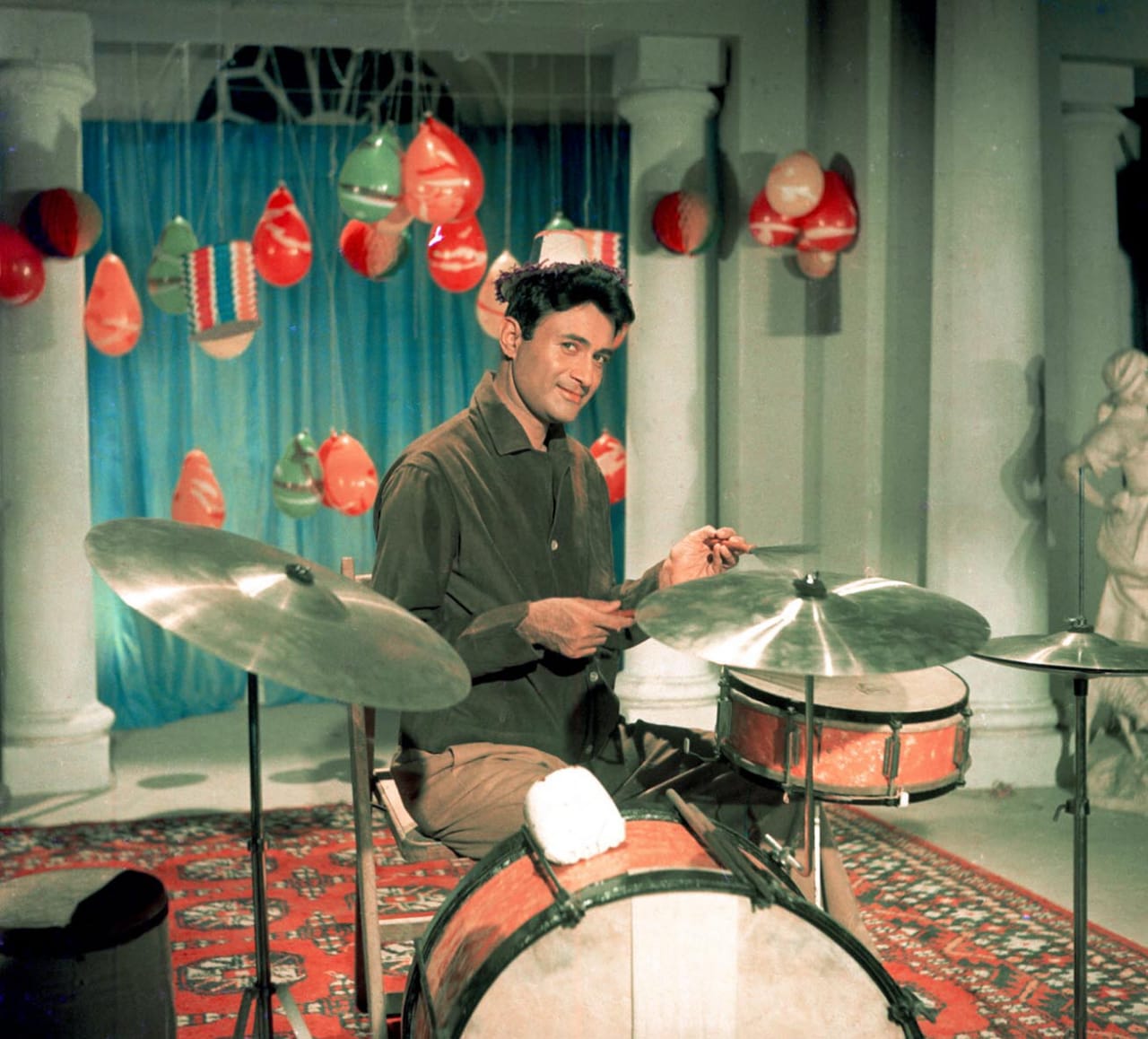
While there is no way to confirm from the horse’s mouth that the ‘replacement’ episode actually took place, the old still of Dev is visual proof.
There are innumerable such unheard of or lesser-known tales that have fewer or no documentation. In the pre-internet and smartphone era, publicity stills and behind the scene shots weaved the timelines and movie gossip.
If today, we have the privilege of seeing this vintage photo, it is all thanks to the Mumbai-based Kamat family that is behind Kamat Foto Studio. Damodar Kamat, the founder, shot most of the movie stills between 1940-1990. Known for his perfection and marvellous photography, he was a favourite of several film fraternity members, from Raj Kapoor to Guru Dutt, Bimal Roy, Rajshri Productions, Nargis, Dharmendra, Meena Kapoor, Madhuri Dixit and Sridevi.
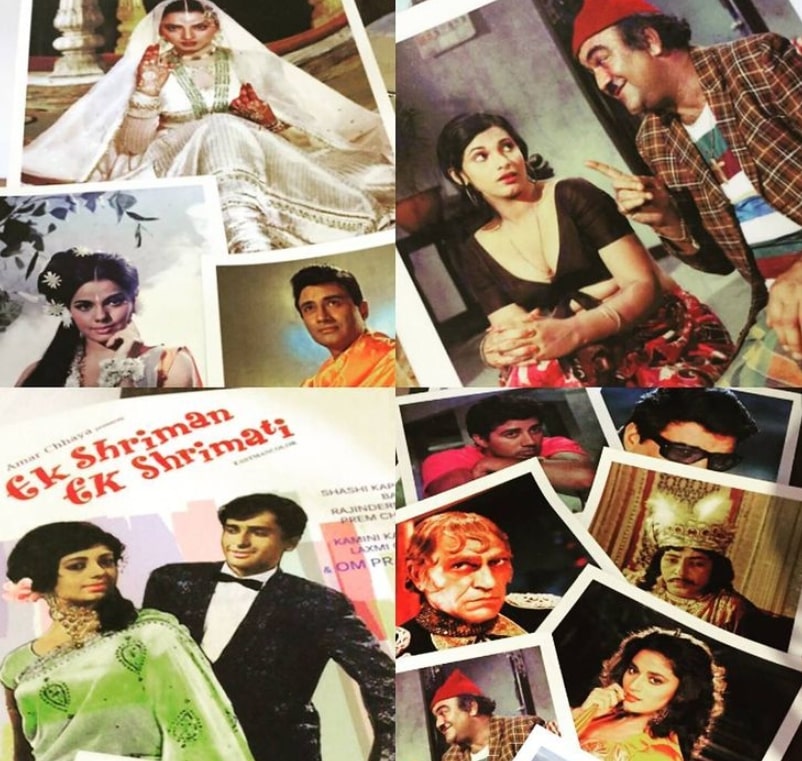
After Damodar passed away in 1967, his son, Vidyadhar took over and today his grandchildren, Neha and Abhishek have also joined. While the digital age has reduced the scope of Foto Studios’ work, the family has been preserving more than 3,00,000 negatives.
These crucial negatives not only unravel the journey of Hindi cinema, but are also being used by academicians in the USA and UK, as well as in reality shows and by directors who want old vintage images for their movies. The company uses hi-tech scanning machines to source a quality photo from a negative.
It may come as a surprise to many that Damodar had no photography background or experience when he began his journey from a humble household of Belgaum in Karnataka. Neha Kamat speaks to The Better India about her grandfather, the significance of photography in filmmaking, and putting excruciating work to preserve the negatives, some as old as 1948.
A self-taught photographer

Today, everyone knows how to click a photo, thanks to the convenience of smartphones and a plethora of filter applications. If you dislike the photo, simply delete it and continue clicking. Getting a perfect frame and light is no more an exclusive skill, and a camera is thereby not a prized possession.
But if you rewind a few decades, you will understand how exotic photography was. It was not yet a mainstream career and purchasing a camera was a distant dream for many middle-class households. Damodar’s was one of them.
He was born on 27 November 1923 in a family of engineers. Belgaum’s primary occupation is farming, followed by sectors manufacturing brass utensils, jewellery and wood products.
“My grandfather was inclined towards arts from his childhood. He was good at drawing and was fascinated by the camera. With permission from his parents, he left the city and moved to Kolhapur, a hub of photography then, when he was around 17. He didn’t know anyone in the new city but got a chance to meet Shantaram Samant, an ace photographer of his time. This kickstarted his journey,” says Neha. 
However, learning the tricks and skills of the profession was hard, given that just like magicians, photographers would not easily share trade secrets. Damodar had to arrange tea, be a delivery boy of chemicals for developing the negative, and lived in the studio to be promoted as a painter for board signs, followed by photography.
Four years later, Damodar moved to the maxim city in 1940 to establish a career in film photography. He worked with Bombay Talkies studio till he started his own company in 1945.
Role of stills in movie budgets & success

Today, making a movie is much more than just going on set, acting, shooting and post-production. It starts with an announcement on signing actors followed by Behind The Scenes (BTS) photos for social media to draw people’s attention. After shooting, a movie poster is released, followed by the teaser and then finally the trailer. By the time the movie arrives, you have partly made a decision to either skip or watch it.
This is in stark contrast to the earlier decades, when releasing trailers was not a thing. Publishing movie stills in magazines was the only way to get the audience excited. Thus, images played a defining role.

Photographers were given the task of analysing the sets, costumes and make-up to create a stunning visual appeal for producers. Using the pictures, the director would ask for more funds, says Neha, “The photos were also used to spread the word about the genre, star cast, tentative release dates and more. These photos included romantic poses, action scenes or portraits.”
Damodar used his studio to click portraits of upcoming actors as well. They would pose in specific costumes or with props that helped the director pick the cast. Rajendra Kumar Tuli, who acted in movies including Mother India (1957) and Sangam (1964), bagged a movie (Vachan, 1955) due to Damodar’s portfolio shoot. Some other actors include Waheeda Rehman, Amir Khan, Madhuri Dixit, Juhi Chawla and more.
Behind the scenes
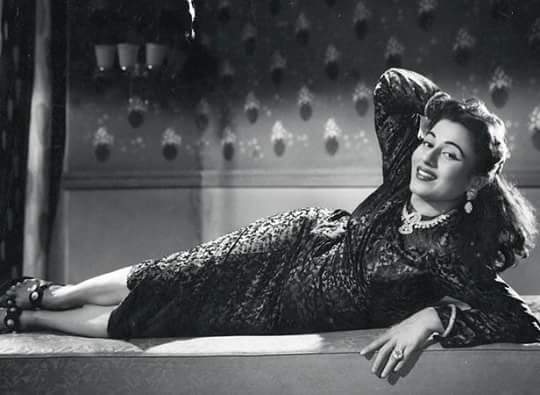
Damodar was very particular about the process, given that each photo cost money and that it would determine his future projects. Plus, the luxury of colour correction was absent, so they had to get it right on set.
“My grandfather was otherwise shy, but when he was on sets, he owned them. Without coming in the way of any crew members, he would quietly take pictures and surprise directors like Raj Kapoor. Stills of Jis Desh Mein Ganga Behti Hai (1960) got him all other films of Kapoor even though he had an in-house photographer. Meena Kumari had a wide jaw so he would click from top angles and an impressed Madhubala even gifted him a Rolleiflex camera. He would place the camera at the exact spot of the shooting camera to get accurate stills,” says Neha. 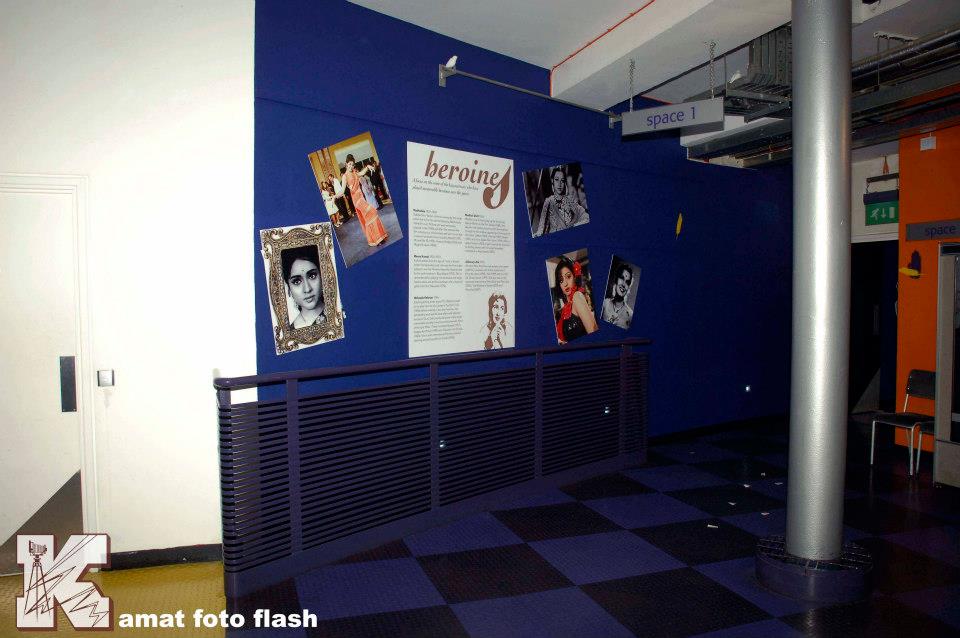
She spills the beans on certain iconic shots that further cemented Damodar’s reputation and respect in the glamour industry.
In Jis Desh Mein Ganga Behti Hai, he managed to get a complex picture of the actress, Padmini twirling with a basic camera. Taken from a top angle, she was still while the skirt was in motion.
Damodar was solution-oriented and quick on his toes. He managed to create an illusion of a library in his studio for Guru Dutt’s Pyasa (1957). He is the writer in the movie so Damodar made a pile of photo albums as books. An ashtray was kept out of focus on the table for a glimmering effect. 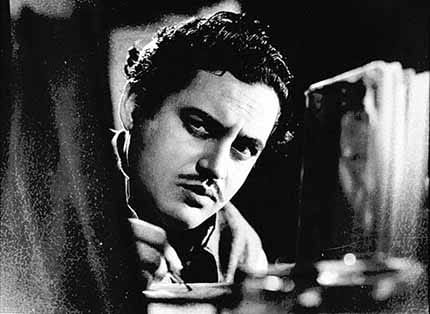
Neha feels disappointed when the photos, which were taken meticulously and with great difficulty, are used without giving the studio credit. But she notes that she is happy that the photos hold nostalgic and priceless value even today.
As we come towards the end of the interview, I can’t help but ask her for more stories to satiate my movie trivia. And she obliges.
In Pakeezah, a movie that took over a decade to shoot, several actors and technicians changed over the years except for the director, Meena Kumari and Damodar. It is a love story between Nargis, a courtesan and Salim Khan, a forest ranger.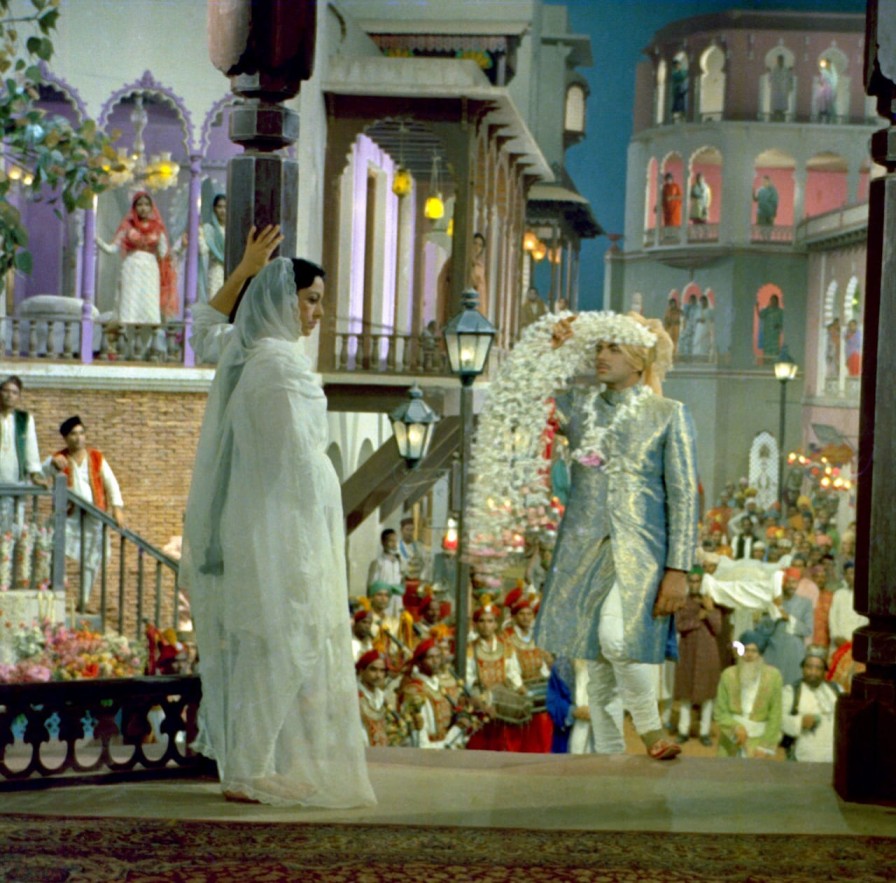
“We have a still of a wedding scene in the movie where Raaj Kumar is holding his sehra to marry Kumari. When I scanned it properly, I was shocked to see Dharmendra’s face. Both the actors’ body type was similar so to save on the cost, Kamal Amrohi, the director, did not click another picture,” she adds. 
Talking about replacing actors, Ajay Devgn was cast alongside Shah Rukh Khan in Karan Arjun (1995). The duo was at the Foto Studio to click publicity stills and Neha found a picture where Khan and Devgn are in leather and brown jackets respectively.
What happens with the negatives?
The Kamat family spends heavily on preserving the negatives. Multiple pictures of a movie are neatly kept on butter paper in a box. These boxes are changed every two or three years.
“We cannot afford to damage any of the boxes, given that they hold Hindi cinema’s entire journey. We have stills of recording studios, music directors, set designs, writers and other technicians who have worked hard to assemble a movie. The crew often goes unnoticed and if not documented well, people will only remember the main cast,” says Neha.
She is also excited about an upcoming book on Kamat Foto Studio that they are working on. We hope the book is released soon with pictures so that we can experience and celebrate our cinema’s past glory.
All images are taken from Kamat Foto Studio. You can follow them here.
Edited by Divya Sethu
This story made me
- 97
- 121
- 89
- 167
Tell Us More
We bring stories straight from the heart of India, to inspire millions and create a wave of impact. Our positive movement is growing bigger everyday, and we would love for you to join it.
Please contribute whatever you can, every little penny helps our team in bringing you more stories that support dreams and spread hope.







